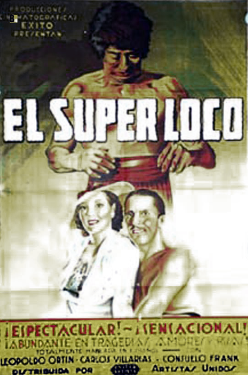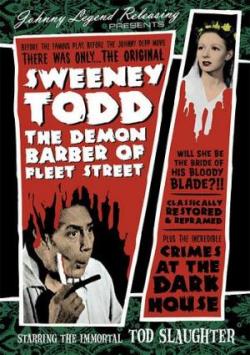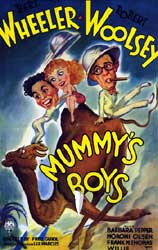The Baskerville family lives under the curse of a ghostly hound due to the actions of a cruel ancestor. Fear of this has made Lord Charles Baskerville (Friedrich Kayssler) a nervous wreck. He lives alone in the large, dark manner, except for his servants, Barrymore and Frau Barrymore (Fritz Rasp, Lilli Schönborn). He is treated by, and visited often by the jovial Dr. Mortimer (Ernst Rotmund). One night he has two additional guests, misogynist Stapleton (Erich Ponto) and distant relative Beryl Vendeleure (Alice Brandt). Stapleton and Mortimer leave, both because there’s a woman in the house, though one because he’s opposed and the other to grant privacy. And then Charles receives a phone call that causes him to rush out onto the moor where he dies. Charles’s will is a shock to all, as there is a nephew, Henry (Peter Voss) that no one had heard of who will inherit. Mortimer, fearing the curse, asks for the aid of Sherlock Holmes (Bruno Güttner), who sends Dr. Watson (Fritz Odemar) to stay with the new heir. They’re informed on their way that an escaped maniac is hidden in the moor, or has drowned. But that is only the first of multiple strange occurrences.
I’ve seen numerous film adaptations of The Hound of the Baskervilles (and missed multiple as there’s well over twenty), and this one is the most chilling. It’s the second sound version and only German one I’ve watched.
The filmmakers went for horror instead of mystery and succeeded, and did so without sticking in anything glaringly out of place the way the 1959 Hammer version did. The story is relatively close to Conan Doyle’s novel, but the focus is shifted. Since even in the novel the actual mystery is only of secondary importance, it gets little time or attention here. Instead we get an elongated section with Charles before his murder. We see his fear, hear the howls, and spend time in the eerie mansion that seems surrounded by death and decay. Long shadow lay over everyone in the house, both literally and figuratively. It develops a marvelously creepy atmosphere. When the location finally shifts to London we spend only a few minutes there, and barely see Holmes at all. Most of what he does in the book (and in the ’39 or ’59 versions) is cut. And we don’t see him again until the picture is nearly over. Instead, the film keeps to the manner and moors, always under overcast skies, or in darkness. And we get new scenes inside the house, as the men make plans by candlelight. There’s also more of a beautiful woman, who runs about in flowing gowns or capes. This is the way to make a Gothic Old Dark House tale.
If based on structure and editing alone, this would be my favorite version the story. And the art design runs a close second to the Rathbone’s. For character and cast, it slips. I am not a frequent viewer of German films of the 1930s, so was surprised to see Peter Voss twice in a month, the other time in Fährmann Maria where he makes an impression as death. Here he’s barely noticeable, but then no one ever makes much of an impression as Henry. He’s not an interesting character. Odemar’s Watson certainly makes an impression, but it is an uneven one. He’s a bit more eccentric then usual, and more arrogant. Here and there he becomes the comic relief, but more often he’s the lead and he feels like a sidekick. Güttner’s Holmes is fine, which is to say he isn’t bad, and isn’t good, and he really needs to be good. There’s no force to him. He gets the job done, but he won’t be on anyone top 5 list of Holmeses. The rest of the cast do well enough, but in each case, a little worse than in other versions (most notable when comparing to the ’39 version). If this was the only version, I’d probably only have positive things to say about them, but with so many, they need to excel. Luckily coming in 3rd or 5th on character is less of a detriment when you are first in atmosphere.
And I must note that the occasional strains of Mussorgsky’s Night on Bald Mountain in the score were distracting.
This isn’t the version you want if you are looking for Holmes. If he is your interest, try any of the others. But if you are looking for a creepy Old Dark House mystery, give this a shot.





 Early film was filled with vaudevillians, who brought their wisecracking, audience-aware antics to the silver screen. Assuming this brand of humor was ever funny (it was before my time, and pretty much before anyone’s who is above ground), it rarely translated well to film which is both more intimate, as you can get much closer to the actor, and more impersonal, as the audience and the performer cannot interact. Yet the studios kept trying, and for a time, many vaudeville-inspired acts were popular, though time has washed most of this clean from popular culture.
Early film was filled with vaudevillians, who brought their wisecracking, audience-aware antics to the silver screen. Assuming this brand of humor was ever funny (it was before my time, and pretty much before anyone’s who is above ground), it rarely translated well to film which is both more intimate, as you can get much closer to the actor, and more impersonal, as the audience and the performer cannot interact. Yet the studios kept trying, and for a time, many vaudeville-inspired acts were popular, though time has washed most of this clean from popular culture.






